Excavation Contractors Nutley
Best Excavation Contractors in Nutley
Get 3 FREE Excavation Contractors quotes for your project today! Compare profiles, reviews, accreditations, portfolio, etc... and choose the best offer.
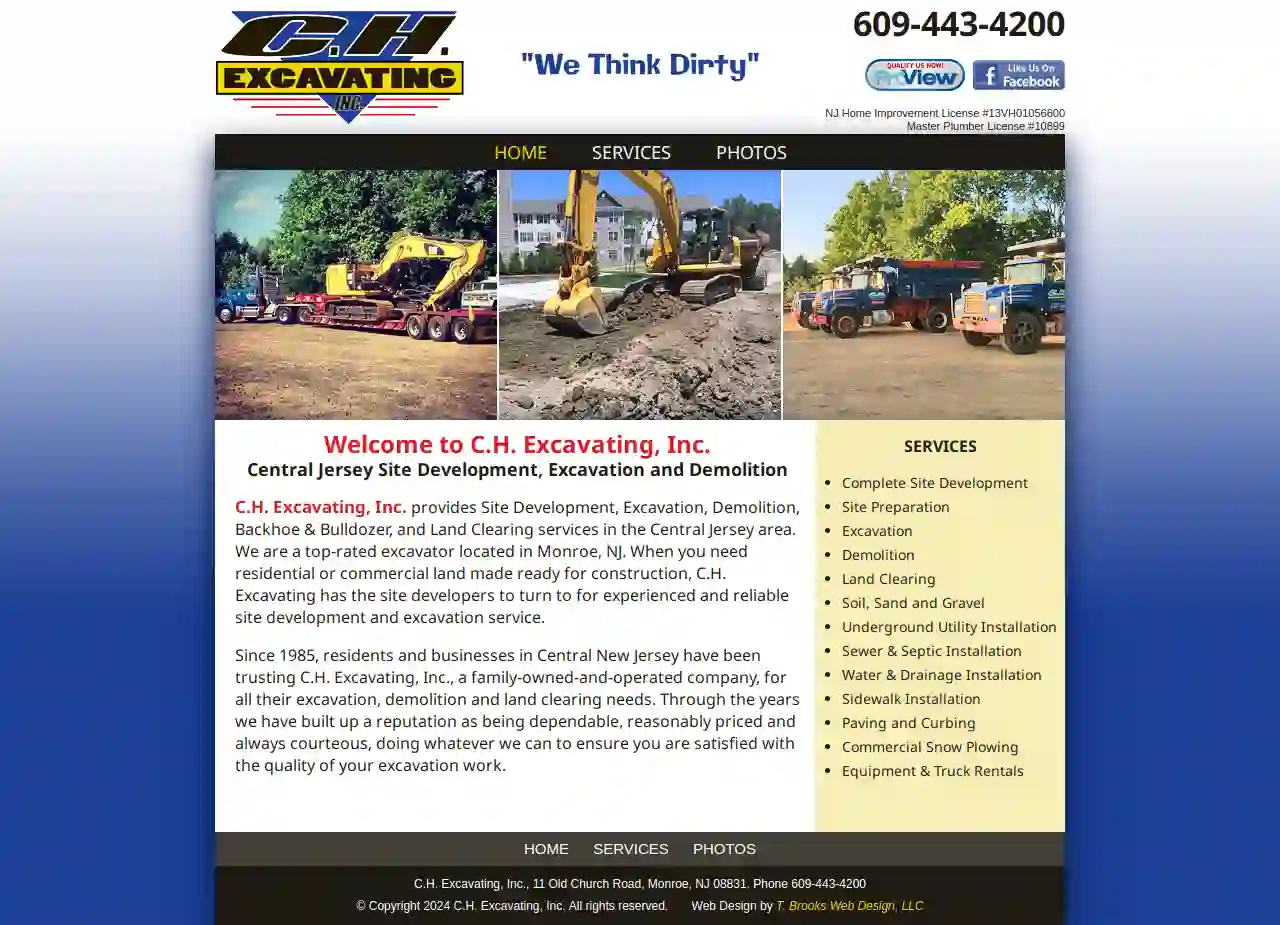
C H Excavating Contractors Inc
53 reviews11 Old Church Road, Monroe, 08831, USWelcome to C.H. Excavating, Inc. Central Jersey Site Development, Excavation and Demolition C.H. Excavating, Inc. provides Site Development, Excavation, Demolition, Backhoe & Bulldozer, and Land Clearing services in the Central Jersey area. We are a top-rated excavator located in Monroe, NJ. When you need residential or commercial land made ready for construction, C.H. Excavating has the site developers to turn to for experienced and reliable site development and excavation service. Since 1985, residents and businesses in Central New Jersey have been trusting C.H. Excavating, Inc., a family-owned-and-operated company, for all their excavation, demolition and land clearing needs. Through the years we have built up a reputation as being dependable, reasonably priced and always courteous, doing whatever we can to ensure you are satisfied with the quality of your excavation work.
- Services
- Why Us?
- Gallery
Get Quote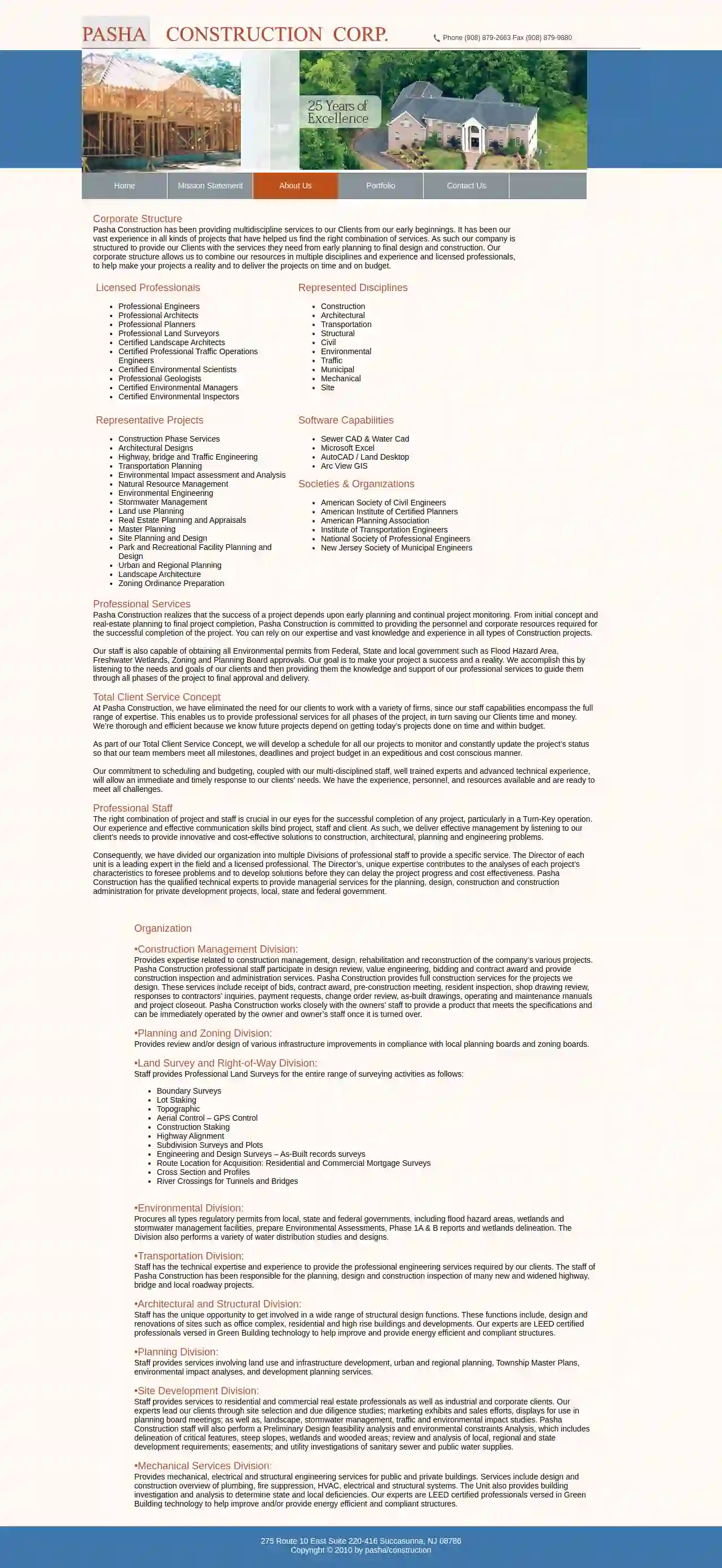
Pasha Construction
275 Route 10 East Suite 220-416, Succasunna, 08786, USAbout Us Pasha Construction has been providing multidiscipline services to our Clients from our early beginnings. It has been our vast experience in all kinds of projects that have helped us find the right combination of services. As such our company is structured to provide our Clients with the services they need from early planning to final design and construction. Our corporate structure allows us to combine our resources in multiple disciplines and experience and licensed professionals, to help make your projects a reality and to deliver the projects on time and on budget. Licensed Professionals Professional Engineers Professional Architects Professional Planners Professional Land Surveyors Certified Landscape Architects Certified Professional Traffic Operations Engineers Certified Environmental Scientists Professional Geologists Certified Environmental Managers Certified Environmental Inspectors Represented Disciplines Construction Architectural Transportation Structural Civil Environmental Traffic Municipal Mechanical Site Representative Projects Construction Phase Services Architectural Designs Highway, bridge and Traffic Engineering Transportation Planning Environmental Impact assessment and Analysis Natural Resource Management Environmental Engineering Stormwater Management Land use Planning Real Estate Planning and Appraisals Master Planning Site Planning and Design Park and Recreational Facility Planning and Design Urban and Regional Planning Landscape Architecture Zoning Ordinance Preparation Software Capabilities Sewer CAD & Water Cad Microsoft Excel AutoCAD / Land Desktop Arc View GIS Societies & Organizations American Society of Civil Engineers American Institute of Certified Planners American Planning Association Institute of Transportation Engineers National Society of Professional Engineers New Jersey Society of Municipal Engineers Professional Services Pasha Construction realizes that the success of a project depends upon early planning and continual project monitoring. From initial concept and real-estate planning to final project completion, Pasha Construction is committed to providing the personnel and corporate resources required for the successful completion of the project. You can rely on our expertise and vast knowledge and experience in all types of Construction projects. Our staff is also capable of obtaining all Environmental permits from Federal, State and local government such as Flood Hazard Area, Freshwater Wetlands, Zoning and Planning Board approvals. Our goal is to make your project a success and a reality. We accomplish this by listening to the needs and goals of our clients and then providing them the knowledge and support of our professional services to guide them through all phases of the project to final approval and delivery. Total Client Service Concept At Pasha Construction, we have eliminated the need for our clients to work with a variety of firms, since our staff capabilities encompass the full range of expertise. This enables us to provide professional services for all phases of the project, in turn saving our Clients time and money. We’re thorough and efficient because we know future projects depend on getting today’s projects done on time and within budget. As part of our Total Client Service Concept, we will develop a schedule for all our projects to monitor and constantly update the project’s status so that our team members meet all milestones, deadlines and project budget in an expeditious and cost conscious manner. Our commitment to scheduling and budgeting, coupled with our multi-disciplined staff, well trained experts and advanced technical experience, will allow an immediate and timely response to our clients’ needs. We have the experience, personnel, and resources available and are ready to meet all challenges.
- Services
- Why Us?
- Gallery
Get Quote
W.G. Yates & Sons Construction Company
4.624 reviews104 Gully Avenue, Philadelphia, MS 39350, 39350, USYates Construction: Building the Future Yates Construction is a leading general contractor specializing in the construction of complex, large-scale projects across the United States. With a rich history spanning decades, we have established a reputation for delivering exceptional results, exceeding client expectations, and fostering lasting relationships. Our Mission Our mission is to provide our clients with the highest quality construction services, delivered on time and within budget. We are committed to safety, integrity, passion, and commitment in everything we do. Our Experience Yates Construction has a proven track record of success in a wide range of market sectors, including: E-Commerce Distribution Facilities Hospitality Gaming Technology Centers Industrial Healthcare Education Government Commercial Our Team Our team of experienced professionals is dedicated to providing our clients with the highest level of service. We are committed to building strong relationships with our clients and subcontractors, and we believe that collaboration is key to success.
- Services
- Why Us?
- Gallery
Get Quote
Triple A Construction and Excavating LLC
Ossian, USBuilding the Future with Quality and Precision At Triple A Construction and Excavating, our founder brings over 30 years of experience to every project, crafting durable structures that stand the test of time. Our expertise ensures every build is not just constructed, but crafted with precision. Dealing with construction projects can be a daunting task. The complexity and scale of tasks can disrupt daily routines and lead to significant stress. At Triple A Construction and Excavating, we understand these challenges. Based in Ossian, IN, we are a family-owned business with deep roots in the community. Our founders have been perfecting their craft for over 30 years, bringing dreams to life with custom pole buildings, concrete services, metal roofing & gutters, new construction, and garage construction. Our approach is tailored to minimize disruption and maximize satisfaction. Why settle for less when you can work with a company that regards your project as a masterpiece in the making? Reach us and let’s start building your future today! Why Choose Us? Choosing Triple A Construction means opting for reliability and quality. We combine hands-on experience with a passion for innovative building. Whether it’s a resilient pole building or a robust new garage, our projects are designed to meet your specific needs and exceed expectations. Expert Experience Guaranteed! Explore Our Diverse Construction Services Our range of services includes creating sturdy and stylish pole buildings, laying solid concrete foundations, and installing durable metal roofing. We also specialize in new constructions and garage creations, ensuring each structure reflects our commitment to excellence. Start Your Construction Project with Us Today Looking for a construction company in Ossian, IN that delivers excellence? Triple A Construction is your go-to partner. We handle every phase of your project with the utmost care and professionalism. Reach us to bring your vision to life.
- Services
- Why Us?
- Gallery
Get Quote
Niblock Excavating
11 reviews52019 County Road 23, Bristol, 46507, USFull Service. Family Run. Formidable Capabilities. For over seven decades, Niblock has been delivering top-notch earthwork, underground utility work and paving in Northern Indiana and Southern Michigan. With a crew over 100 strong, we handle all facets of large civil work while offering the efficient communication and personalized service of a family run company. The Niblock Difference Done Right the First Time, Every Time It’s a cliche claim, but no less true. We hold ourselves to the highest standards in all we do. In fact, we’ve actually turned down work when specifications don’t meet our standards. When you choose Niblock, you can count on long term durability. More than Muscle, Experienced Problem-solving Partners With decades of experience, we’ve seen it all. We’re always on the lookout for ways to improve performance and make your application more efficient. We’ve helped clients reroute access and layout for better traffic flow, spotted ways to improve drainage, dramatically expand capacity with minor alterations, and more. Tightly Coordinated, Family Run We pack big capabilities into a small-company feel, enabling us to communicate more efficiently and eliminate approval bottlenecks. You’ll get personalized service and a simple, single point of contact for all of your job needs. On Time and On Budget It seems delays and overruns are standard operating procedure for many, but not at Niblock. We’re experienced and realistic in our projections. We pride ourselves on sticking to our budget and deadline commitments. A Steady History You can Count On For three generations, Niblock has been delivering top-notch work in Northern Indiana and Southern Michigan. We have a stable, long-term track record. When we say we stand by our work, you can be assured we’ll be here to do just that for many years to come.
- Services
- Why Us?
- Gallery
Get Quote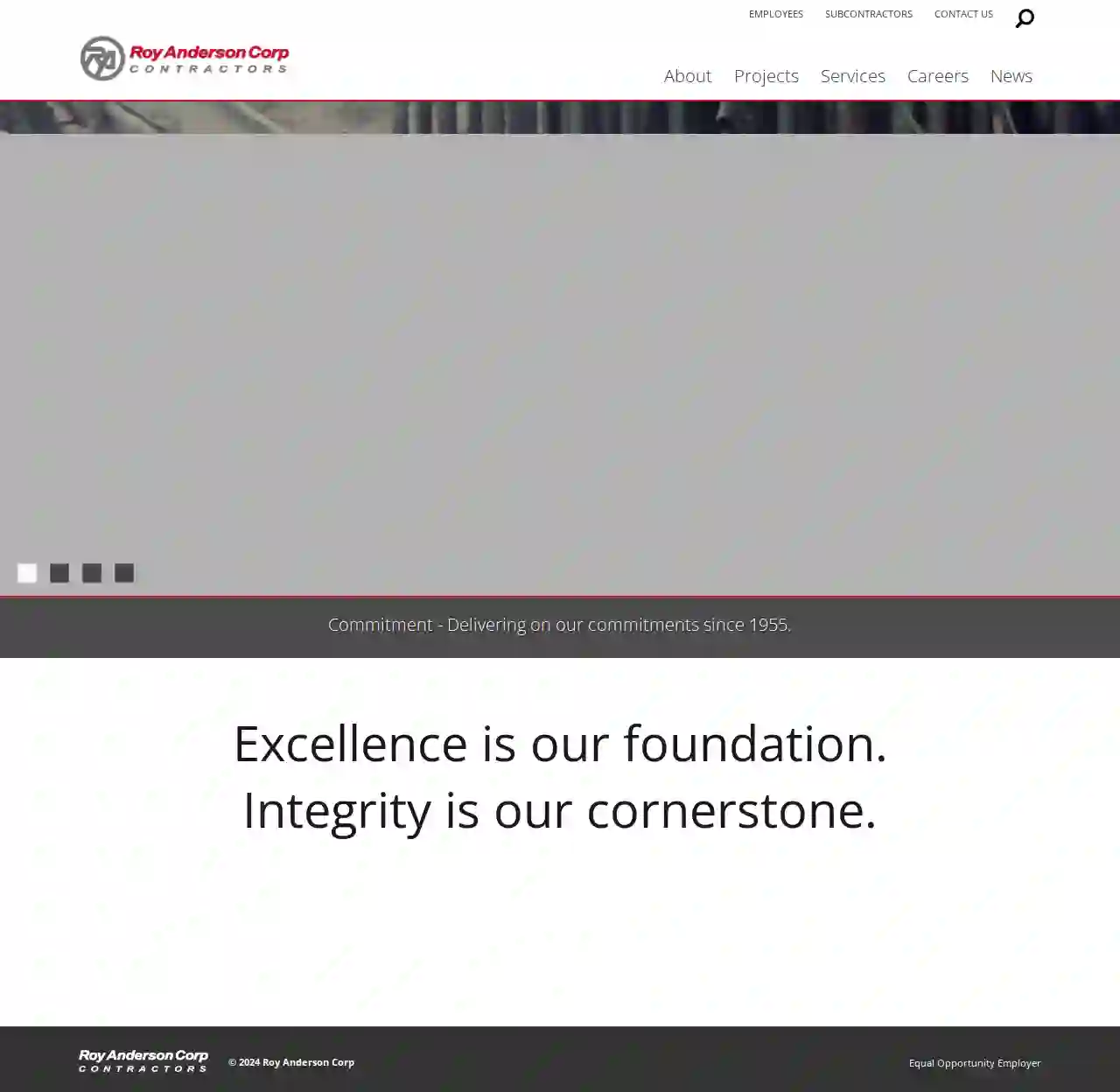
Roy Anderson Corp
4.128 reviews11400 Reichold Road, Gulfport, 39503, USAbout Roy Anderson Corp Roy Anderson Corp is an innovative construction company with unique strengths, committed to delivering unsurpassed customer service and performance to customers, creating exciting opportunities for associates and bound together by shared core beliefs of safety, quality and integrity. Since 1955 Roy Anderson Corp has delivered exceptional construction services including Preconstruction, Design-Build, General Contracting and Construction Management. We are a wholly owned subsidiary of Tutor Perini Corporation (NYSE: TPC) who is consistently ranked among the top builders in the United States by Engineering News Record.
- Services
- Why Us?
- Gallery
Get Quote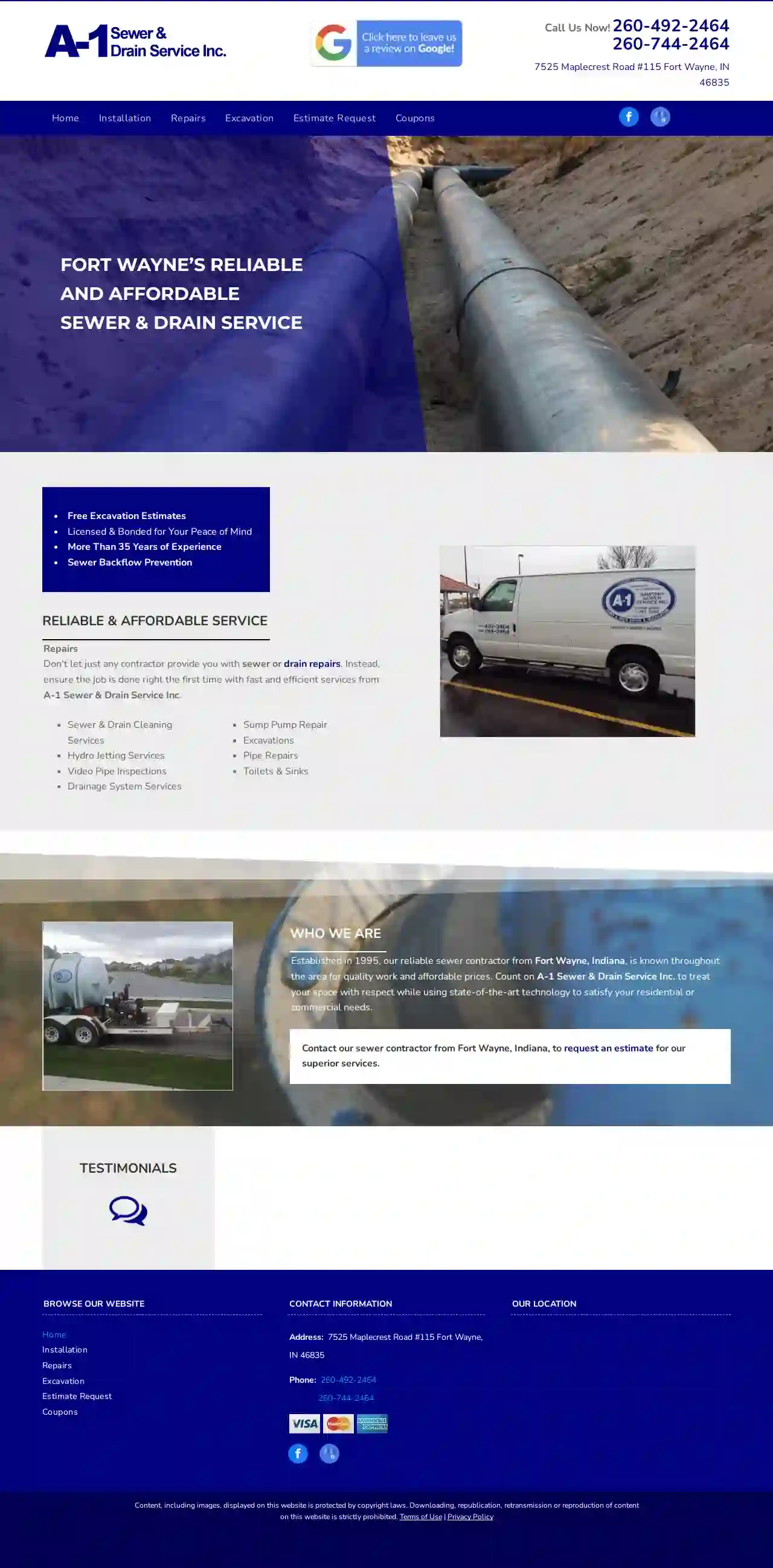
A-1 Sanitary Sewer & Drain Services
4.778 reviews7525 Maplecrest Road, #115, 7525 Maplecrest Road #115, Fort Wayne, 46835, USFORT WAYNE’S RELIABLE AND AFFORDABLE SEWER & DRAIN SERVICE A-1 Sewer & Drain Service Inc. is a trusted sewer and drain contractor serving Fort Wayne, Indiana. Established in 1995, we have over 35 years of experience providing quality services at affordable prices. We are committed to treating your space with respect and using state-of-the-art technology to meet your residential or commercial needs. We are licensed and bonded for your peace of mind. Contact us today for a free excavation estimate.
- Services
- Why Us?
- Testimonials
- Gallery
Get Quote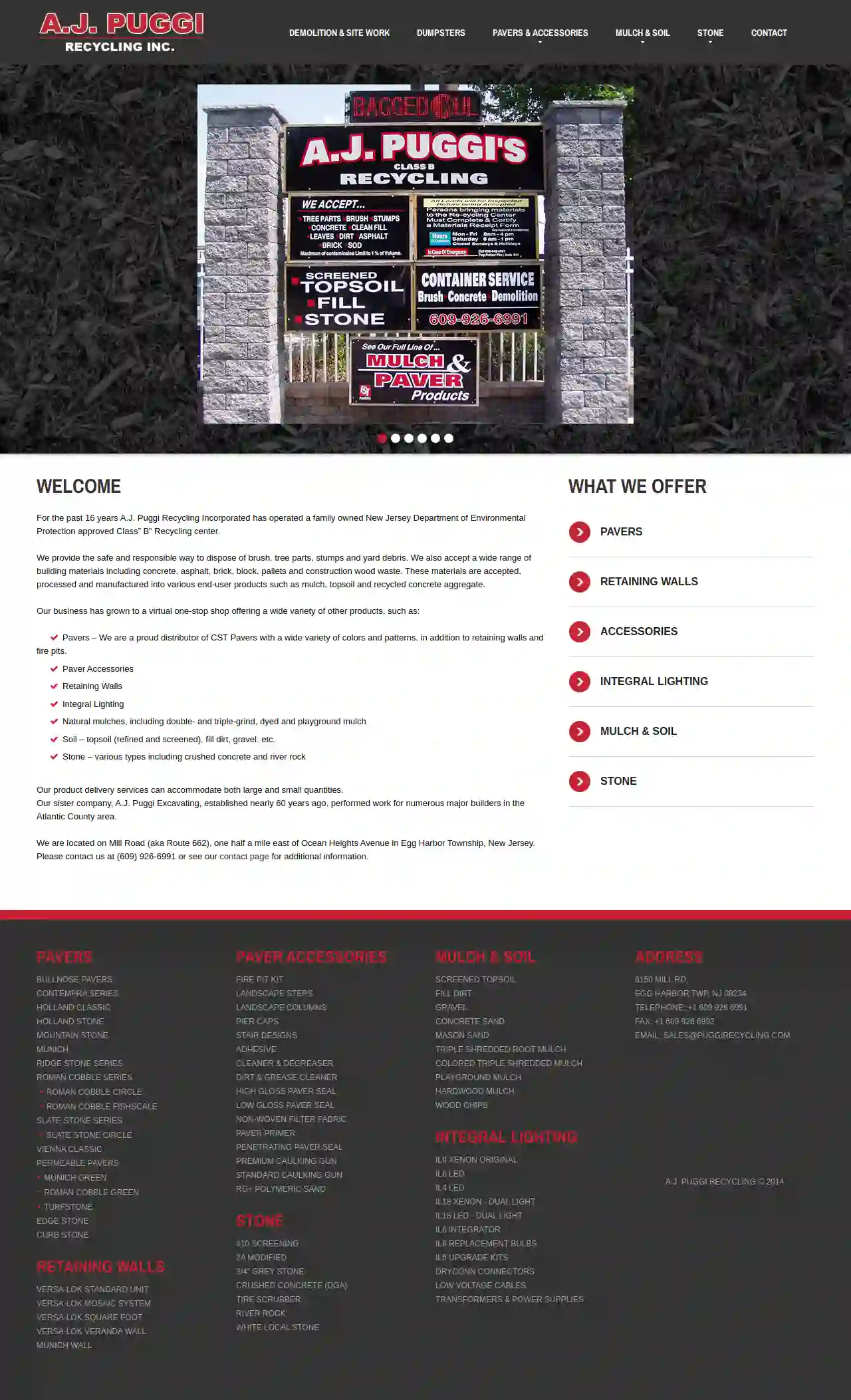
A J Puggi Class B Recycling
4.636 reviews6150 Mill Rd, Egg Harbor Twp, 08234, USA.J. Puggi Recycling: Your One-Stop Shop for Landscaping and Construction Needs For over 16 years, A.J. Puggi Recycling Incorporated has been a family-owned and operated New Jersey Department of Environmental Protection approved Class "B" Recycling center. We are committed to providing safe and responsible disposal of various materials, including brush, tree parts, stumps, yard debris, concrete, asphalt, brick, block, pallets, and construction wood waste. We process these materials into valuable end-user products like mulch, topsoil, and recycled concrete aggregate. Our business has evolved into a one-stop shop, offering a wide range of products and services to meet your landscaping and construction needs. We are a proud distributor of CST Pavers, offering a diverse selection of colors and patterns, along with retaining walls and fire pits. We also provide a comprehensive range of paver accessories, integral lighting, natural mulches (including double- and triple-grind, dyed, and playground mulch), soil (topsoil, fill dirt, gravel), and various types of stone, including crushed concrete and river rock. Our product delivery services cater to both large and small quantities, ensuring your project is completed efficiently. Our sister company, A.J. Puggi Excavating, established nearly 60 years ago, has a strong track record of providing exceptional service to numerous major builders in the Atlantic County area. We are conveniently located on Mill Road (aka Route 662), just half a mile east of Ocean Heights Avenue in Egg Harbor Township, New Jersey. For any inquiries, please contact us at (609) 926-6991 or visit our contact page for additional information.
- Services
- Why Us?
- Gallery
Get Quote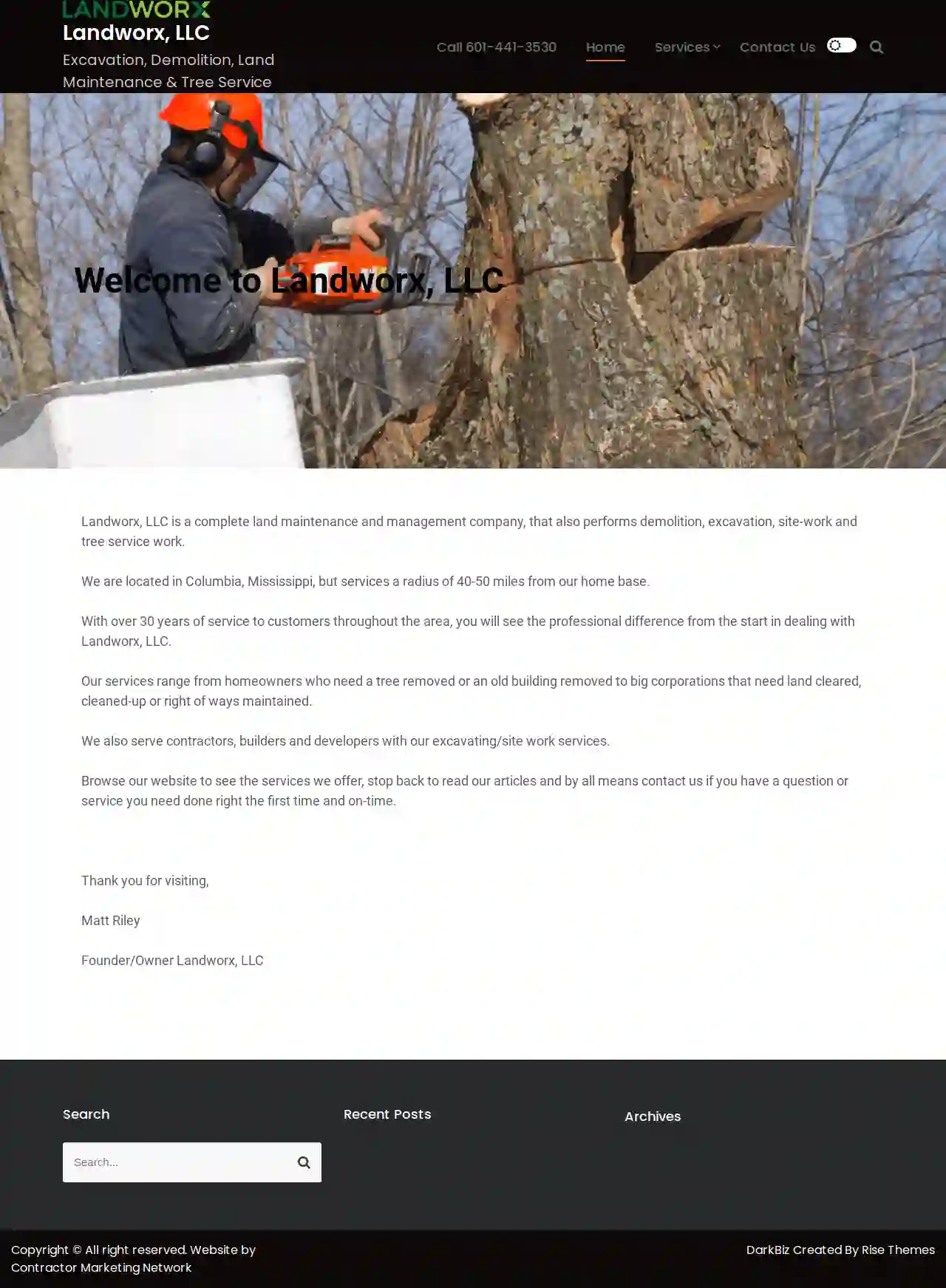
Landworx, LLC
52 reviewsBrick, USWelcome to Landworx, LLC Landworx, LLC is a complete land maintenance and management company, that also performs demolition, excavation, site-work and tree service work. We are located in Columbia, Mississippi, but services a radius of 40-50 miles from our home base. With over 30 years of service to customers throughout the area, you will see the professional difference from the start in dealing with Landworx, LLC. Our services range from homeowners who need a tree removed or an old building removed to big corporations that need land cleared, cleaned-up or right of ways maintained. We also serve contractors, builders and developers with our excavating/site work services. Browse our website to see the services we offer, stop back to read our articles and by all means contact us if you have a question or service you need done right the first time and on-time. Thank you for visiting, Matt Riley Founder/Owner Landworx, LLC
- Services
- Why Us?
- Gallery
Get Quote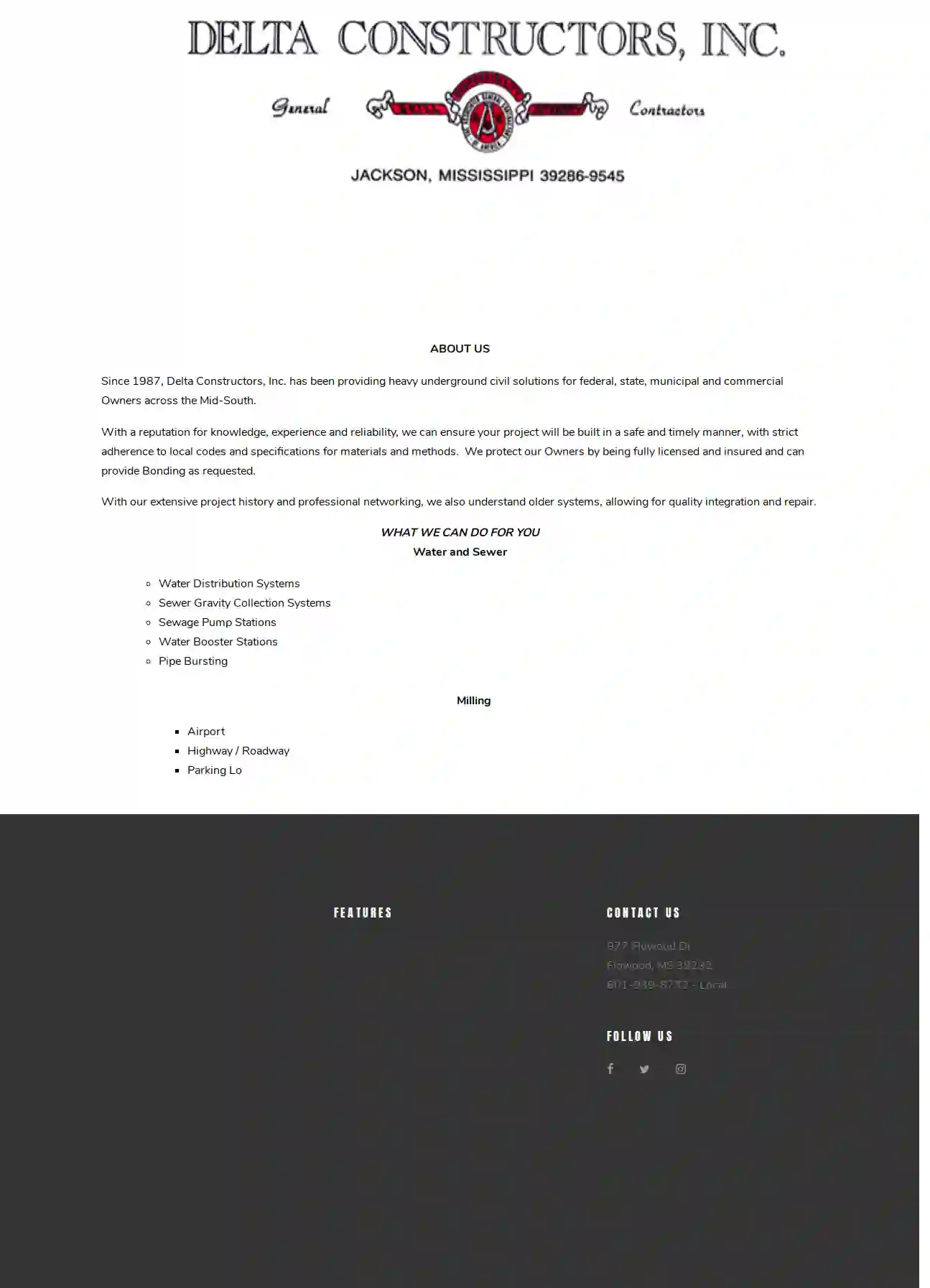
Delta Constructors, Inc.
4.610 reviews977 Flowood Dr, Flowood, 39232, USAbout Delta Constructors, Inc. Since 1987, Delta Constructors, Inc. has been providing heavy underground civil solutions for federal, state, municipal and commercial Owners across the Mid-South. With a reputation for knowledge, experience and reliability, we can ensure your project will be built in a safe and timely manner, with strict adherence to local codes and specifications for materials and methods. We protect our Owners by being fully licensed and insured and can provide Bonding as requested. With our extensive project history and professional networking, we also understand older systems, allowing for quality integration and repair.
- Services
- Why Us?
- Gallery
Get Quote
Over 22,076+ Excavation Contractors onboarded
Our excavation contractors operate in Nutley & surroundings!
ExcavationHQ has curated and vetted the Best Excavation Contractors in and around Nutley. Find the most trustworthy business today.
Frequently Asked Questions About Excavation Contractors
- Excavations Deeper Than a Certain Depth: This varies by jurisdiction, usually around 5 feet.
- Excavations Near Utilities: Digging near buried utilities (gas, water, electric) often requires permits and utility locates to prevent damage.
- Excavations Affecting Public Property: Projects impacting sidewalks, roads, or other public areas typically require permits.
- Excavations in Environmentally Sensitive Areas: Projects in wetlands, floodplains, or other sensitive areas might need special permits.
- Clear the Area: Remove any obstacles, including vehicles, outdoor furniture, landscaping features, or structures, from the excavation zone and surrounding area.
- Mark Existing Features: Identify and mark underground utilities, septic tanks, sprinkler systems, or other buried elements you want to protect.
- Protect Landscaping: Use tarps or fencing to shield trees, shrubs, gardens, or other landscaping elements from damage.
- Provide Access: Ensure the excavation contractor has clear access to the work area, including gates wide enough for equipment.
- Discuss Logistics: Coordinate with the contractor regarding parking arrangements, material delivery, and any special instructions or concerns you might have.
- Spring and Fall: Often considered favorable due to moderate temperatures and drier soil conditions.
- Summer: Can be suitable, but hot weather can make working conditions challenging and might require additional measures (shade, hydration) for workers.
- Winter: Excavation in winter can be more difficult due to frozen ground, snow, and potential delays caused by inclement weather. It might also require specialized equipment or techniques.
- Project Size and Scope: The larger and more complex the excavation, the higher the cost.
- Soil Type: Different soil types require different equipment and techniques, impacting costs. Rocky or clay-rich soil can be more expensive to excavate than loose soil.
- Accessibility: Difficult-to-access sites might require specialized equipment or additional labor, increasing expenses.
- Disposal Costs: Hauling away excavated material (soil, rocks, etc.) to disposal sites incurs additional fees.
- Permits and Inspections: Depending on local regulations, permits and inspections might be required, adding to the overall cost.
Do I need a permit for excavation?
How do I prepare my property for excavation?
What is the best time of year for excavation?
How much does excavation cost?
Do I need a permit for excavation?
- Excavations Deeper Than a Certain Depth: This varies by jurisdiction, usually around 5 feet.
- Excavations Near Utilities: Digging near buried utilities (gas, water, electric) often requires permits and utility locates to prevent damage.
- Excavations Affecting Public Property: Projects impacting sidewalks, roads, or other public areas typically require permits.
- Excavations in Environmentally Sensitive Areas: Projects in wetlands, floodplains, or other sensitive areas might need special permits.
How do I prepare my property for excavation?
- Clear the Area: Remove any obstacles, including vehicles, outdoor furniture, landscaping features, or structures, from the excavation zone and surrounding area.
- Mark Existing Features: Identify and mark underground utilities, septic tanks, sprinkler systems, or other buried elements you want to protect.
- Protect Landscaping: Use tarps or fencing to shield trees, shrubs, gardens, or other landscaping elements from damage.
- Provide Access: Ensure the excavation contractor has clear access to the work area, including gates wide enough for equipment.
- Discuss Logistics: Coordinate with the contractor regarding parking arrangements, material delivery, and any special instructions or concerns you might have.
What is the best time of year for excavation?
- Spring and Fall: Often considered favorable due to moderate temperatures and drier soil conditions.
- Summer: Can be suitable, but hot weather can make working conditions challenging and might require additional measures (shade, hydration) for workers.
- Winter: Excavation in winter can be more difficult due to frozen ground, snow, and potential delays caused by inclement weather. It might also require specialized equipment or techniques.
How much does excavation cost?
- Project Size and Scope: The larger and more complex the excavation, the higher the cost.
- Soil Type: Different soil types require different equipment and techniques, impacting costs. Rocky or clay-rich soil can be more expensive to excavate than loose soil.
- Accessibility: Difficult-to-access sites might require specialized equipment or additional labor, increasing expenses.
- Disposal Costs: Hauling away excavated material (soil, rocks, etc.) to disposal sites incurs additional fees.
- Permits and Inspections: Depending on local regulations, permits and inspections might be required, adding to the overall cost.